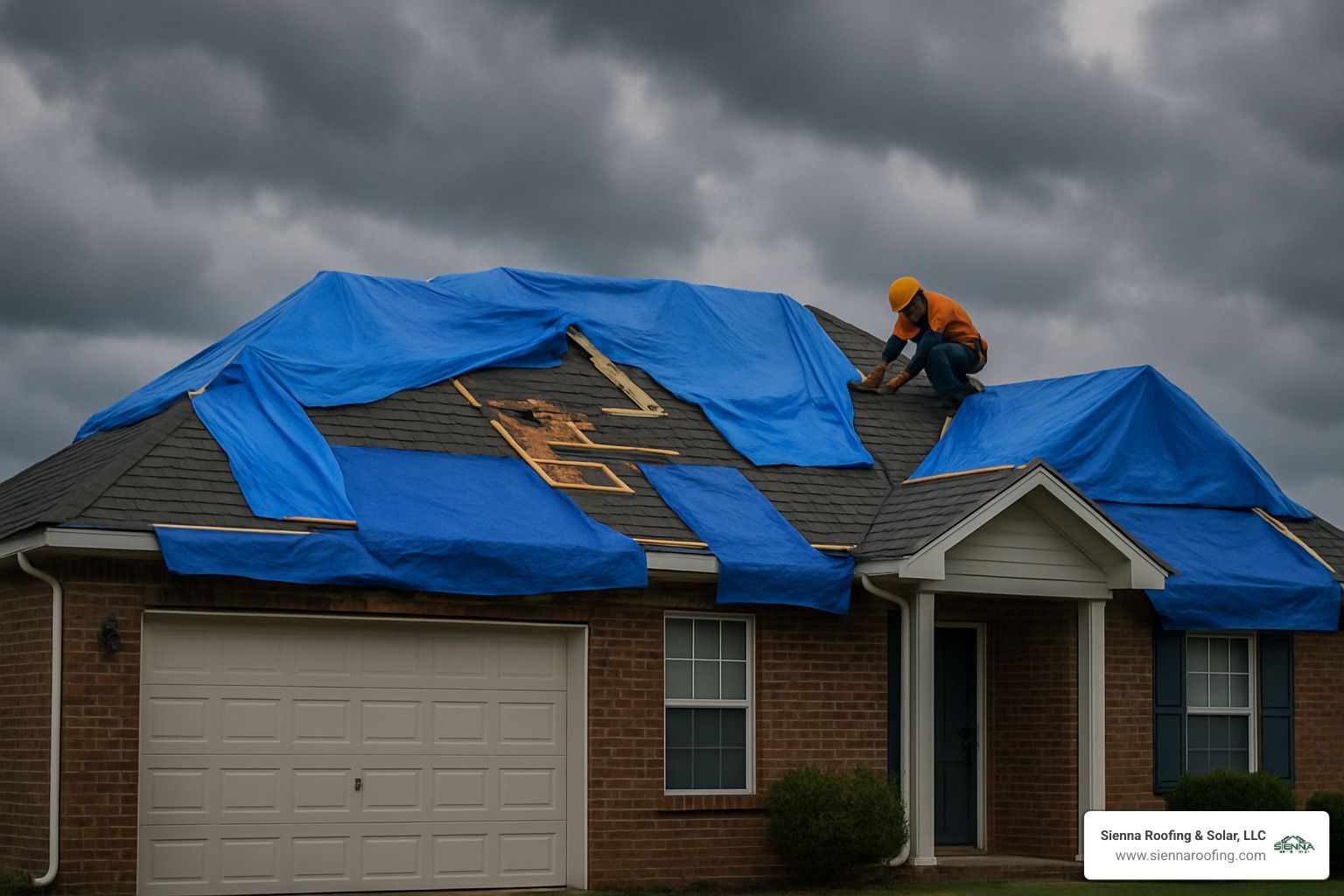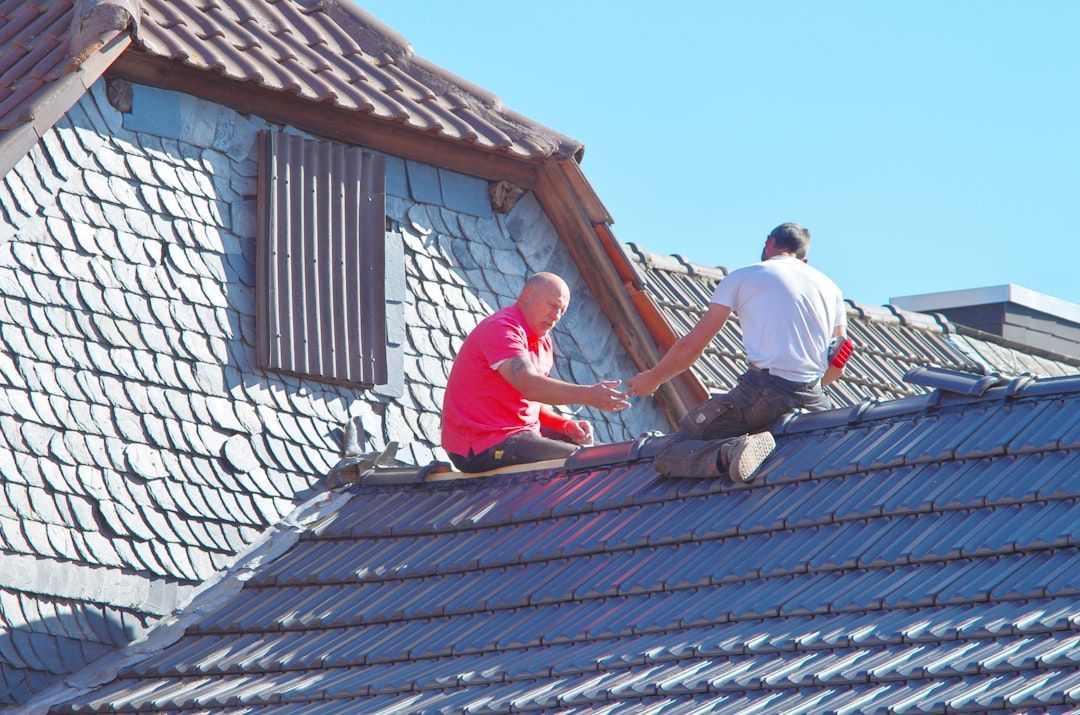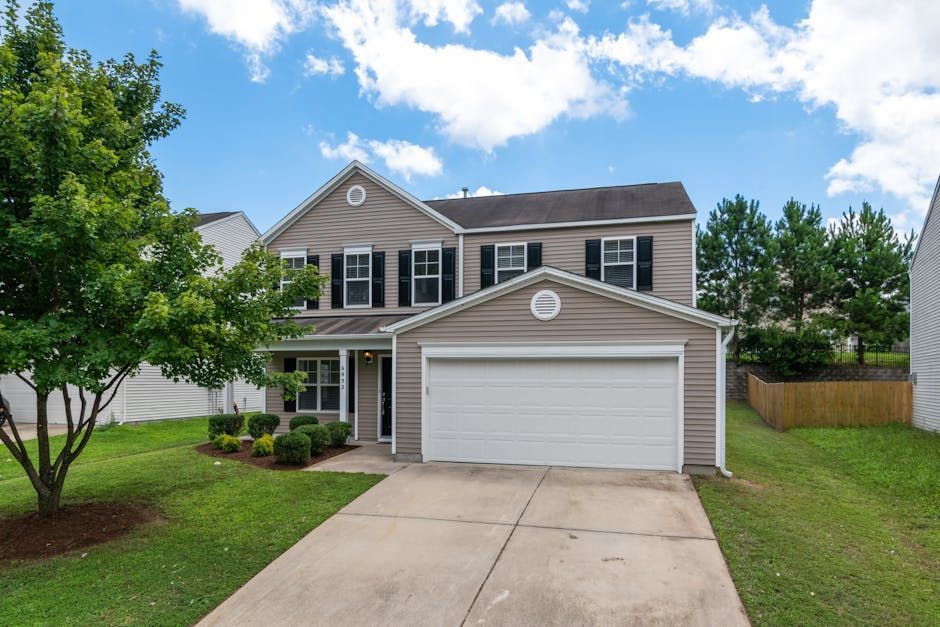Time to Shine Again? Replacing Your Commercial Metal Roof Made Easy

Andre Castro
Owner of Sienna Roofing
Why Commercial Metal Roof Replacement is Your Best Investment
Commercial metal roof replacement is the process of removing an old metal roof system and installing a new one, typically costing $15-25 per square foot for full tear-off compared to $3-10 per square foot for restoration options.
Quick Answer for Commercial Metal Roof Replacement:
- When to replace: Rust spots, frequent leaks, loose fasteners, age over 30 years
- Cost range:$6-40 per sq ft installed (varies by material)
- Timeline: 1-4 weeks depending on building size
- ROI: 40-60 year lifespan with 10-20% energy savings
- Best materials: Steel ($8-16/sq ft), aluminum ($10-17/sq ft), copper ($20-40/sq ft)
Your commercial building's metal roof works hard every day, shielding your business from Texas storms and keeping energy costs down. Even the toughest metal roofs don't last forever, but they can deliver up to 60 years of service life with proper maintenance and reduce energy costs by as much as 20% thanks to reflective coatings.
The key is knowing when repair makes sense versus when replacement becomes the smarter choice. Signs like widespread rust, recurring leaks, or a roof approaching 30+ years old often point toward replacement.
I'm Andre Castro, CEO of Sienna Roofing & Solar, LLC, with over five years of experience helping Sugar Land area businesses steer commercial metal roof replacement decisions. My background in Construction Management from Texas A&M ensures your roof replacement delivers maximum value and performance.

Is It Time? Spotting the Moment for Commercial Metal Roof Replacement
Nobody wants to think about commercial metal roof replacement until they absolutely have to. But waiting until your roof is screaming for help usually costs way more than catching problems early.
After walking hundreds of commercial roofs in the Sugar Land area, the signs are often clearer than business owners realize. Rust spots are like freckles that keep multiplying. What starts as a few patches quickly spreads across panels, especially in our humid Texas climate. Once rust breaks through the protective coating, it's playing offense against your metal.
Leaks tell their own story. A single drip from a loose fastener might be a repair job, but multiple leak points, interior stains across your ceiling, or wet insulation during inspections mean your roof is waving a white flag.
Fastener back-out is particularly sneaky. Texas heat makes metal expand and contract, gradually working screws loose over years. If your maintenance team constantly tightens fasteners across large roof sections, you're fighting a losing battle.
Wind uplift damage from storms can compromise seam integrity faster than expected. When panels lift at edges or seams separate, your entire roof system's structural integrity is at risk.
Age matters more than most realize. Once your metal roof hits 30+ years old, even if the metal looks decent, fasteners, sealants, and flashings are typically ready for retirement.
Safety risks emerge when deterioration makes your roof unsafe for routine maintenance. If your team can't safely walk the roof for inspections, you've crossed into replacement territory.
The choice between retrofit versus tear-off depends heavily on what's happening underneath your existing roof. Retrofit systems can save money and minimize disruption, but only when your existing substrate is solid.
Professional inspection reports take the guesswork out of these decisions. We recommend annual inspections once your roof passes 20 years old, plus post-storm evaluations.
More info about Roofing Repair
Repair, Restore or Replace? Decision Matrix
Targeted repairs make sense for newer roofs with isolated problems - typically under 20 years old with a few leak points. Cost runs $500-5,000 and provides another 5-10 years of service life.
Coating restoration works for roofs showing surface wear but maintaining structural integrity. Coatings like silicone systems provide excellent UV protection at $3-7 per square foot, extending service life by 10-15 years.
Spray foam systems address multiple issues while adding insulation value. Expect $5-10 per square foot for 15-20 years of additional service.
Recover systems install new panels over existing roofs, avoiding tear-off costs. This costs $10-18 per square foot and provides 25-40 years of service when your existing deck remains sound.
Full replacement becomes the clear choice for structural concerns or extensive damage. While the upfront investment of $15-25 per square foot is significant, you're looking at 40-60 years of reliable service life.
Choosing the Right Metal Roof System & Material
Picking the right metal for your commercial metal roof replacement feels overwhelming, but each material has a sweet spot where it shines brightest.
Steel dominates commercial roofing for good reason. It's tough, affordable, and handles Texas weather well. Galvalume coating - the 55% aluminum, 45% zinc combo - fights humidity effectively. Most Sugar Land clients choose this route because it delivers 40-50 years of service at $10-16 per square foot installed.
Aluminum makes sense near the coast where salt spray attacks other metals. It's naturally corrosion-resistant, weighs half what steel does, and offers natural reflectivity. At $10-17 per square foot, aluminum costs slightly more than steel upfront but easily hits 40-60 years of life in coastal conditions.
Copper is the luxury option at $20-40 per square foot. Copper roofs can outlast the buildings they're on - 60-100 years with beautiful patina developing over time.
Zinc offers copper's longevity with self-healing properties. Scratch the surface, and zinc repairs itself by regenerating its protective coating. It costs $15-30 per square foot.
Standing seam systems cost more upfront but deliver superior weather protection. Panels connect with mechanical seams that move with temperature changes without creating leak points. No exposed fasteners means fewer maintenance headaches.
Exposed fastener panels save money initially but those rubber gaskets will need attention every 10-15 years.
Insulated Metal Panels (IMPs) combine structure, insulation, and weather protection in one component. Installation goes faster, and energy performance often exceeds traditional combinations.
PVDF coatings maintain appearance for 30+ years compared to standard polyester paint that fades within 10-15 years.
Cool roof colors can drop roof surface temperature by 50-70°F compared to dark colors, translating directly to lower cooling costs.
60-year life study on standing-seam steel
| Material | Cost per Sq Ft | Weight (lbs/sq ft) | Typical Lifespan | Best Applications |
|---|---|---|---|---|
| Galvanized Steel | $8-12 | 1.5-2.5 | 30-40 years | Inland, budget-conscious |
| Galvalume Steel | $10-16 | 1.5-2.5 | 40-50 years | General commercial use |
| Aluminum | $10-17 | 0.5-1.0 | 40-60 years | Coastal, energy efficiency |
| Stainless Steel | $15-25 | 2.0-3.0 | 50-75 years | Extreme environments |
| Copper | $20-40 | 1.5-2.0 | 60-100 years | Premium, historic |
| Zinc | $15-30 | 1.0-1.5 | 60-80 years | Self-healing properties |
Matching Material to Climate & Codes
Coastal areas demand upgraded corrosion protection. Salt spray will attack standard galvanized steel, making aluminum or heavily coated steel essential.
Central Texas sits in serious hail country. Steel generally outperforms aluminum in impact resistance, with heavier gauges providing better dent protection.
Hurricane zones require systems tested for extreme wind speeds. Properly installed standing seam systems can handle winds exceeding 200 mph.
Fire ratings matter in wildfire-prone areas. Metal roofing systems typically achieve Class A fire ratings - the best available.
Energy codes increasingly push reflective materials to reduce cooling loads, which usually saves money on energy bills too.
Commercial Metal Roof Replacement Process: From Planning to Punch List

A successful commercial metal roof replacement starts long before the first panel goes up. Projects that go smoothest are those where we plan every detail upfront.
Site assessment examines more than obvious problems. We check structural capacity, access routes, and potential surprises hiding under old roofing. This tells us whether you're a candidate for overlay or need full tear-off.
Budgeting factors in everything from tear-off expenses to temporary protection and access equipment. We're upfront about potential complications to avoid surprise costs.
Permits protect your investment and keep insurance happy. We handle all paperwork and inspection scheduling.
The tear-off versus overlay decision depends on assessment findings. Tear-off gives a clean slate and thorough deck inspection. Overlay saves time and disposal costs when existing roofs can support it.
Safety plans cover every project aspect. Fall protection, material handling, weather monitoring - we don't cut corners on safety.
Panel installation starts with perfect alignment of the first panel. Seam sealing happens continuously, not at the end. Flashing details around vents and drains often determine roof longevity.
Cleanup and final warranty inspection complete the process, documenting everything and providing comprehensive warranty information.
More info about Roofing Tear-Off & Replacement
Overlay vs Full Tear-Off
Structural load is the first overlay consideration. Most commercial buildings handle additional weight easily since metal roofing is relatively light.
Moisture trapped between old and new systems can create serious problems. If your existing roof has leak history, tear-off usually makes more sense.
Landfill costs favor overlay when conditions permit, but savings disappear if moisture problems develop later.
Occupant disruption differs dramatically. Overlay typically allows normal operations, while tear-off might require relocating equipment or temporarily closing areas.
Typical Timeline & Milestones
Pre-construction takes 2-4 weeks for permits, materials, and coordination. Day-1 mobilization involves equipment delivery and safety setup. Mid-project QC checkpoints catch issues before they become expensive problems. Weather monitoring protects materials and workers throughout the project.
Budget, Lifespan & ROI: Making the Numbers Work
The upfront costs might make you wince, but the long-term value story is where metal roofing truly shines.
Material costs form your investment foundation. Steel systems run $8-16 per square foot installed. Aluminum bumps up to $10-17 per square foot. Copper commands $20-40 per square foot but could outlast your great-grandchildren.
Labor rates add $3-8 per square foot depending on system complexity. Tear-off expenses add $2-5 per square foot but often pay for themselves by revealing hidden problems.
Coating systems cost $3-7 per square foot and extend life by 10-15 years. But commercial metal roof replacement at $15-25 per square foot delivers 40-60 years of service life- often the better long-term investment.
Energy savings up to 20% dramatically impact your bottom line over decades. Reflective metal surfaces bounce Texas heat back to the sky instead of baking your building. We've seen clients cut cooling costs by thousands annually.
Tax credits and utility rebates can cover 10-30% of project costs. Maintenance requirements are refreshingly simple - annual inspections and minor repairs every 5-10 years typically suffice.
The 40-60 year lifespan transforms the cost equation. While you might replace traditional roofs 2-3 times over the same period, your metal roof keeps performing.
Cool roof colors reduce surface temperatures by 50-70°F, translating directly into lower cooling costs. Recyclability provides environmental benefits and future scrap value.
Warranty coverage varies significantly. Material warranties range 10-40 years, while workmanship warranties typically cover 2-10 years.
Learn more about metal roof energy efficiency
More info about Free Roof Estimate

Lifecycle Cost vs TPO/EPDM
The real story emerges when comparing total cost of ownership rather than sticker prices. Payback periods for metal roofing typically hit 8-15 years when factoring energy savings and reduced maintenance.
Salvage value at end-of-life provides a bonus membrane systems can't match. Insurance discounts often reward metal roofing's superior performance, with ongoing savings compounding over decades.
Avoiding Pitfalls & Hiring the Right Contractor + FAQ
Choosing the right contractor for your commercial metal roof replacement can make or break your project. The stakes are high when investing tens of thousands of dollars in a roof that must perform flawlessly for decades.
Code compliance should be non-negotiable. Experienced contractors know local codes, pull proper permits, and schedule required inspections. Improper fastening causes more problems than almost any other error - screws driven too tight crush gaskets, creating instant leak points.
Mismatched metals create galvanic corrosion that eats your investment. Professional installers understand these interactions and use proper isolation techniques.
Moisture barriers require careful installation attention. Trapped moisture can cause rot, mold, and structural damage that's expensive to fix.
Safety oversights put everyone at risk. Reputable contractors maintain comprehensive safety programs and follow OSHA guidelines.
Licensing verification protects you multiple ways. Insurance coverage isn't optional - verify contractors carry both general liability and workers' compensation with adequate limits.
References from recent commercial projects tell the real story. Ask about quality, timeliness, and warranty service. Local experience matters - contractors familiar with Texas weather and codes recommend the best solutions.
More info about Commercial Roofing
What Are the Top Mistakes During Commercial Metal Roof Replacement?
Oil canning- wavy panel appearance - results from poor handling or installation. Under-driven screws represent the most common mistake, allowing water infiltration. Skipped sealant applications create immediate leak points. Poor ventilation design leads to condensation problems.
How Do I Vet Contractors for Commercial Metal Roof Replacement?
Credentials should be your starting point - verify licensing, insurance, and manufacturer certifications. Workmanship warranty terms reveal contractor confidence. Project portfolio assessment helps evaluate relevant experience. Communication quality during bidding often predicts project success.
How Long Does a Commercial Metal Roof Replacement Project Take?
Size factors significantly impact duration. Small buildings might complete in 1-2 weeks, while large facilities require 6-8 weeks. Weather delays are inevitable - we build buffer time for rainy periods. Crew size affects both speed and quality. Phased installation may be necessary for occupied buildings.
Conclusion
Your commercial metal roof replacement journey doesn't have to feel overwhelming. Smart building owners recognize when their roof is telling them it's time - whether that's widespread rust, recurring leaks, or hitting that 30-year mark where maintenance costs eat into profits.
Material choice matters. Steel gives excellent value for most applications. Coastal locations benefit from aluminum's corrosion resistance. Planning to own your building for decades? Copper's upfront cost might be most economical when factoring its century-long lifespan.
The installation process separates professionals from pretenders. Proper fastening, seam sealing, and flashing details determine whether your new roof delivers 40-60 years of reliable service or becomes a maintenance headache.
At Sienna Roofing & Solar, LLC, we don't believe in one-size-fits-all solutions. We understand your specific situation, explain options clearly, and help you make decisions that make sense for your business. Our 100% satisfaction guarantee means we're not done until you're completely happy.
Energy savings of 10-20% are real dollars staying in your pocket every month. When you multiply those savings over 40+ years, the numbers look attractive.
Ready to stop worrying about your roof and start planning for decades of reliable protection? We'd love to assess your building and give you straight answers about your options. No pressure, no sales pitch - just honest assessment and transparent pricing.
Your business deserves a roof that works as hard as you do. Let's make sure your next roof is the last one you'll need to think about for a very long time.








